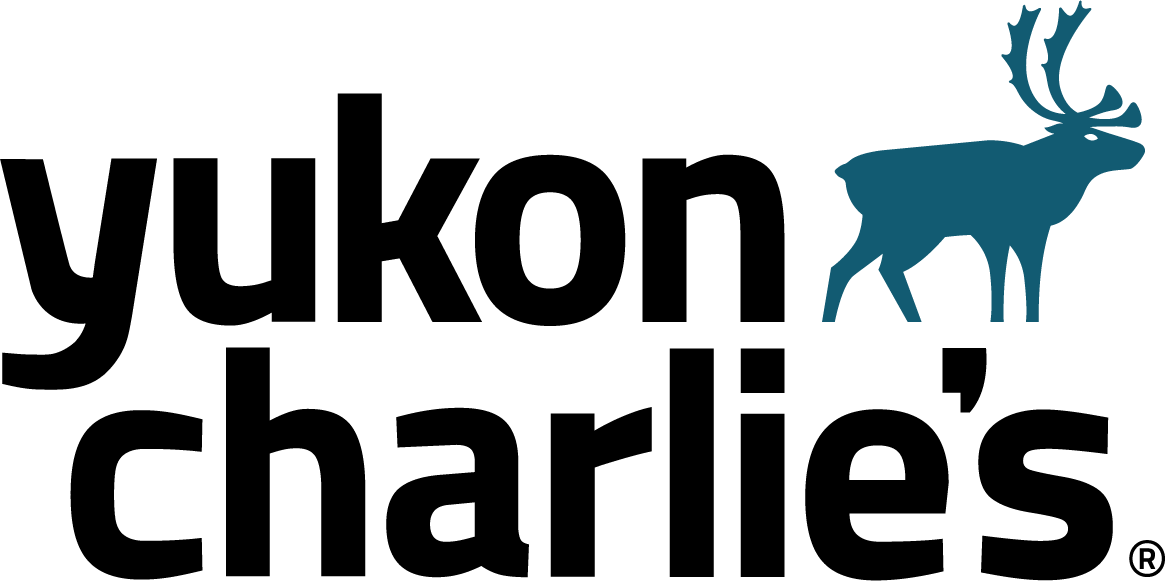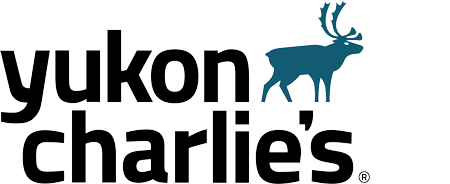
By: Yukon Charlie’s Trailblazer, Trish Borboa of 2spry.tumbler.com
I don’t know how popular snowshoe running is around where you live, but it isn’t where I live. Every time I go out, put on my snowshoes, and start running, I get the STRANGEST looks. Granted, most of the time I am wearing goggles (temps are brutal here in the winter), so I’m sure I look like a running bug, at least that’s what I feel like anyway. LOL! But once I’m out there, running on top of the snow, I get in my own world and the stares? Well, who cares? I’m out having fun doing what I love. So if you love running and don’t mind getting out in the winter months or need some motivation to do so, ya gotta try it.
I wasn’t always a snowshoe runner. I was going crazy running on the treadmill one year and had seen a post of someone snowshoe running so I put them on my Christmas list. I hadn’t tried much winter running because the snow was crazy deep and I didn’t own any spikes at that time. I wanted to try some type of winter sport but snowmobiling and biking just didn’t appeal to me. Luckily I got the snowshoes for Christmas and that sealed the deal. I was doing it! After my first time going out I was hooked. Man is it a serious workout! That been said there are some do’s and don’ts to beginning this activity.So I thought I’d share some snowshoe running tips I’ve learned over the years.

DO: Warm up. I am a huge fan of warming up for all activities. Your muscles, joints, and fascia need to become supple to handle the stress caused by whatever activity you are about to embark on.
DON’T: Underestimate the weather. Have the right snowshoe running and racing gear. Cold weather requires good gear that you can move in but keeps you warm. Plus you will want some waterproof shoes. I wear the Altra Lone Peak Neoshell with gaiters. Need some more tips? Check out my winter running article here: http://2spry.tumblr.com/post/168485340951/winter-running-tips
DO: Gets specific snowshoe running shoes, because guess what? They are specific. Without getting too technical, they are lighter and smaller than your typical snowshoe and have different binding and crampon systems. Snowshoe running is difficult enough so adding more weight into the mix would not be good. (My running snowshoes weigh 2.5lbs per pair, and my backcountry snowshoes weigh 3.9lbs per pair) I wear the Yukon Charlie’s Race Ultralight.
DON’T: Start out like gangbusters!!! Snowshoe running is not easy! Expect to be 2 or even 4 plus minutes per mile slower than your normal pace depending on how deep the snow is. You need to get used to the feel of the crampon and the tail. If you aren’t careful you will take a dive. Start out slow, learn, and feel your body, it will be better in the long run. You may even have to walk. Yes, I just said walk. There is nothing wrong with that. Jog for a bit, walk for a bit. It’s still a great workout.
DO: Start out on flat terrain. You need to learn balance. It requires a lot of core and hip strength and challenges joint stability, especially at the ankle. This is worse on uneven terrain making it very hard and discouraging when you’re first starting out.
DON’T: Try and snowshoe run every day or like your normal running schedule. You really need to ease into it or you can get injured. Because it is very challenging on your balance and uses a lot of muscle stabilization for your joints, an overuse injury can crop up fast.

DO: Pay attention to your form, but stay relaxed. It is easy to just start getting in your head and forget that you have on snowshoes. When that happens, boom you fall. At least in my experience. And a lot of times when you get cold, shoulder shrugging and teeth clenching happen. That makes ripe for increased energy expenditure and tension headaches. Believe me I’ve done this. Pay attention to the temperatures and layer up!
DO: Tell someone when you leave. Be smart. I think you should tell someone all the time, but in the winter especially. Until you get used to snowshoe running, you don’t really know how long you will last and in the winter frostbite can come on fast. You heat up faster running in snowshoes because your working so much harder. You don’t want to get to the turnaround and have to walk back with all the sweat you just accumulated. Do a short loop. If it’s easy for you, you can always do another one right?
DON’T: Forget to hydrate. You may not feel like drinking when it is cold, but trust me, you need to. And with the extra burn of the snow and snowshoes, you really need to.
DO: Change out of your wet clothes right away!!! It’s never good to stand around and get cold after a workout.
DON’T: Forget to cool down. Cooling down and recovering are just as important as your workout. Get that mobility, stretching in and throw on some compression socks to begin the recovery process. Don’t come in an sit. Move around. You want to help your body flush out!!!

Quick Snowshoe Running Form Tips
Don’t drag your toes. You have to find the balance. It’s not marching, it’s pulling. You have to pull your foot like it’s going under your butt, and you CANNOT HEEL STRIKE! Well, I’m sure you could, but it is not a good idea. You could really hurt yourself (I’m not an advocate of heel striking while running either.) 🙂 Oh! and if you have a place you can go to a clinic to learn, I highly recommend it!
Snowshoe running can be a great if you invest time in the basics. I hope it opens a whole new winter wonderland for you as it did me. I love to be challenged, and is it ever challenging. For me it became instantly addicting and it motivates me to get out of the door. I love the feeling of being sweaty and tired after a good snowshoe run in the woods. Nothing like it. If you want to try it and have further questions, don’t hesitate to message me. I will help in any way I can. I also want to hear how you like it if you decide to try! Cheers!
-Trish







